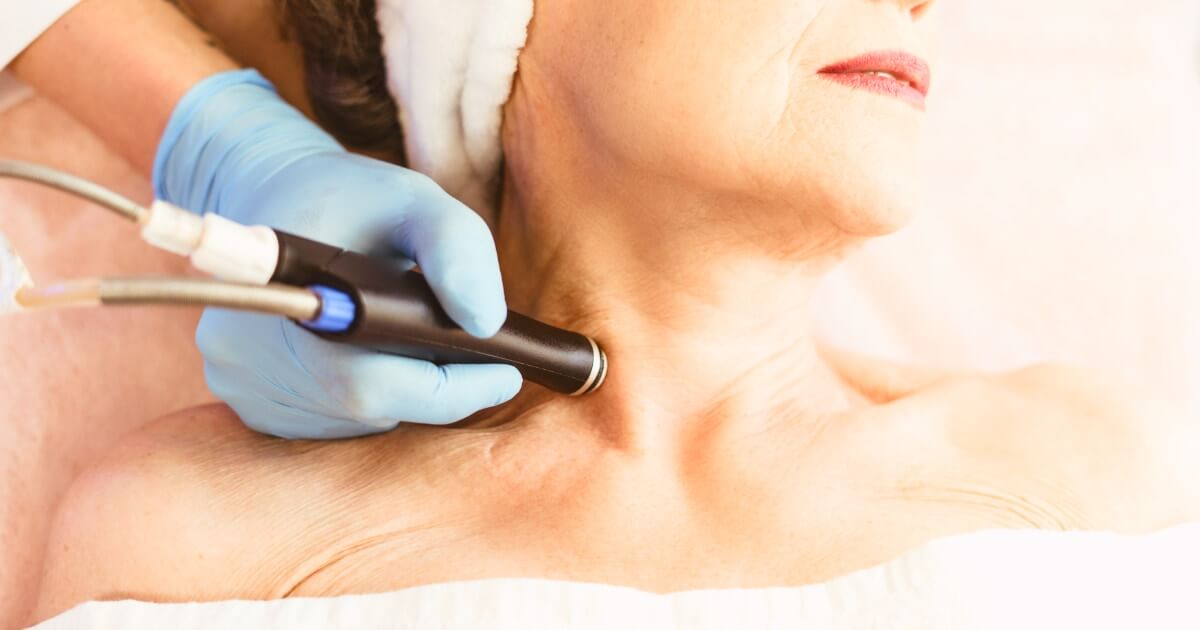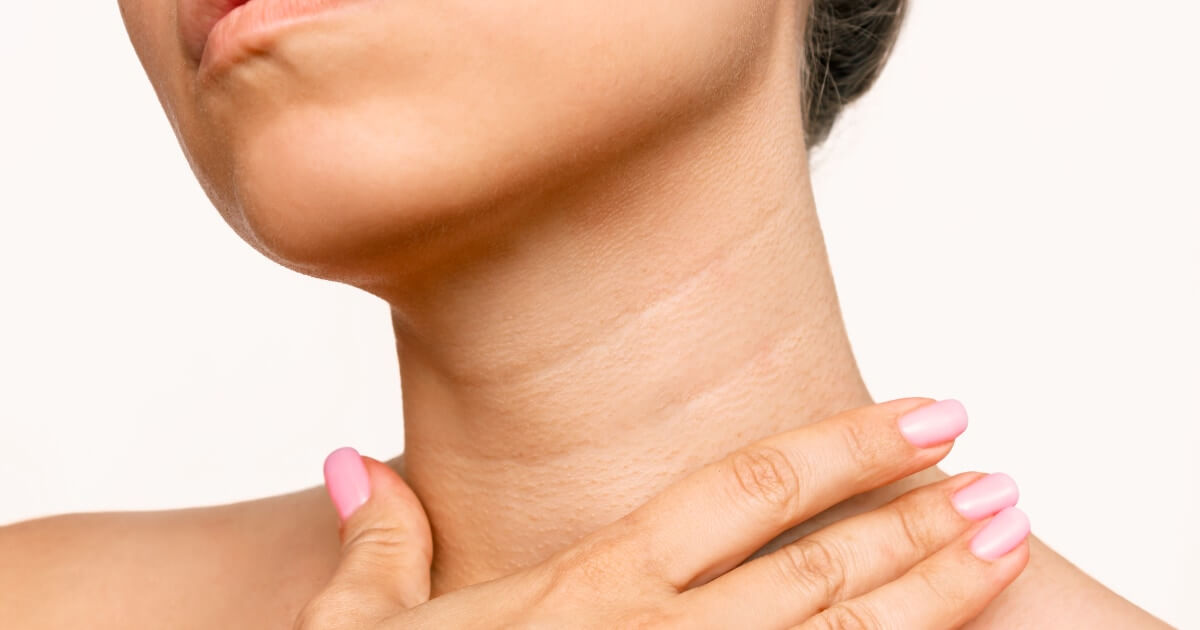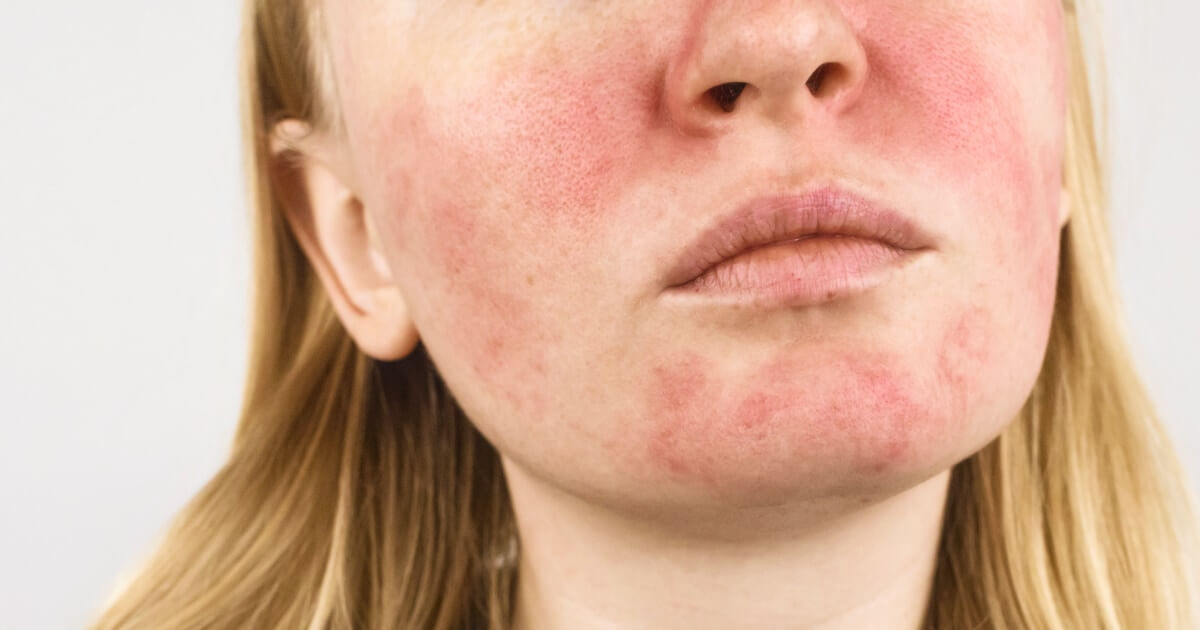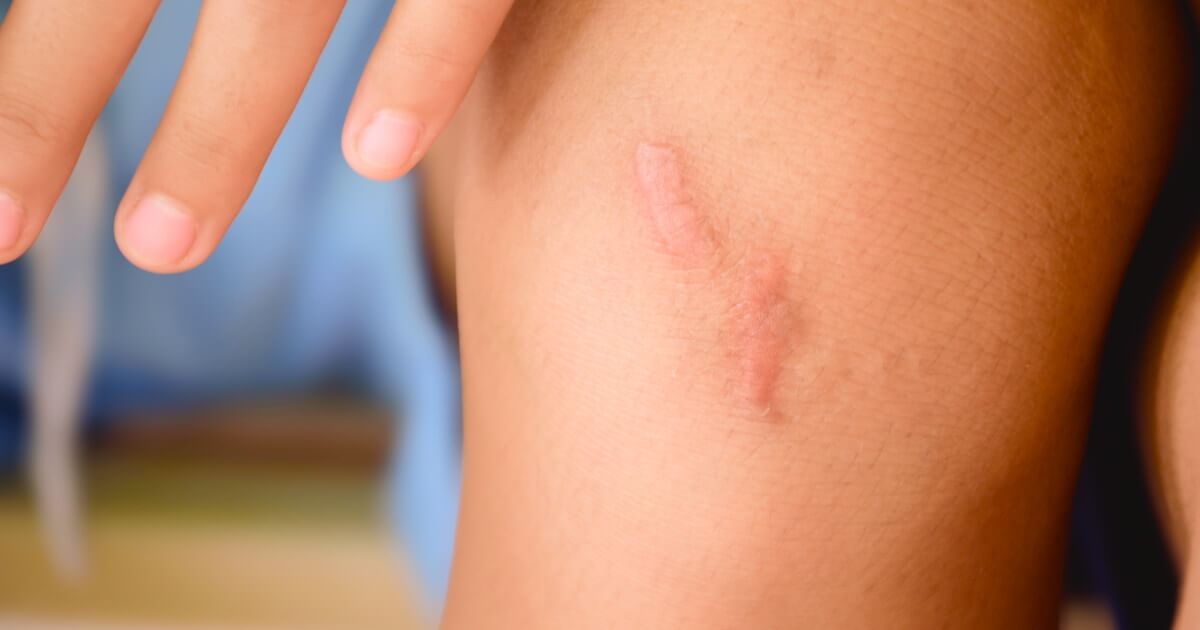Did you know that your neck can reveal more about your age than your face? Even though we dedicate time and effort to facial care, this delicate area prone to aging is often forgotten. wrinkles, sagging and fine lines They are signs of the passage of time, but with proper care, it is possible to reduce and delay their appearance.
From the García-Legaz Dermatological Institute We want to explain to you what causes wrinkles on the neck, how can you care for and revitalize this area and we present to you the advances in dermatology aesthetics, to treat wrinkles and give your neck the same attention as your face.
Origin of neck wrinkles
The skin of the neck, unlike that of the face, has lower density of sebaceous glands, a reduced collagen production and one thinner epidermal structure, making it especially vulnerable to the formation of wrinkles and sagging.
Aging in the neck is mainly due to the natural decrease in the production of collagen and elastin, which added to the prolonged exposure to the sun It damages essential protein fibers, weakening the dermal structure and reducing the skin's ability to regenerate and elasticity.
From a point of view molecularThe following processes contribute to making aging in the neck more evident:
- Reduction in the synthesis of structural proteins.
- Decreased capacity of water retention.
- Alteration of the mechanisms of cellular repair.
- Increase of the oxidative stress.
Factors that accelerate the appearance of wrinkles on the neck
As with all wrinkles, understanding how they form is key to combating them, and neck wrinkles are no exception.
Some of the causes The most common are:
- Sun exposure: the ultraviolet radiation (UV) damages collagen and elastin, proteins necessary for epidermal firmness.
- Sudden weight changes: the skin loses elasticity and tone when it is repeatedly stretched and contracted, which breaks the dermal fibers and contributes to the appearance of folds.
- Repetitive movements: frequent gestures and tensions, such as looking at your mobile device, promotes the formation of “tech neck” lines.
- Natural loss of collagen and elastin: With age, the skin loses these proteins, which causes sagging and the appearance of wrinkles.
- Dehydration: lack of hydration, both internal and external, accentuates the lines fine and reduces elasticity of the skin.
- Genetics: some skin types have a greater predisposition to develop more visible wrinkles.
Collagen: the key
He collagen is a fundamental protein To maintain healthy, youthful skin, especially in delicate areas like the neck. Considered the body's "natural glue," collagen provides:
- Firmness.
- Elasticity.
- Skin hydration.
“Collagen acts as structural support, allowing the skin recovers its original shape after each movement.”
However, from the 25 years, production levels begin to decrease, compromising this capacity and promoting the appearance of horizontal lines and wrinkles characteristic of this area.
Without the necessary collagen, the skin loses its firmness, becomes more sagging, and wrinkles deepen more quickly. Therefore, preserving and stimulate collagen production is key to prevent premature aging in one of the most revealing areas of our body: the neck.
Rejuvenate your neck
To rejuvenate the neck, it is essential to pay attention to this area with specific care. Below, we share with you routines, habits and treatments that will help you prevent or reduce wrinkles on your neck.
Routine and habits to reduce and prevent neck wrinkles
Combating existing wrinkles and preventing the formation of new ones requires a combination of consistent habits and personalized treatments, suitable for your skin type, age and particular needs.
- Neck care routine: uses a gentle facial cleanser To remove impurities without drying out your skin, apply creams with ingredients such as hyaluronic acid and, above all, protects the skin of the neck with a sunscreen broad spectrum (UVA/UVB) with SPF 50 daily.
- Incorporates anti-aging active ingredients: reduces wrinkles and improves the elasticity of your skin with active ingredients such as retinol or retinoids (to stimulate cell renewal), vitamin C (antioxidant component that promotes collagen production and protects against environmental damage) and peptides (which promote firmness by strengthening the skin's support structures).
- Maintain a healthy lifestyle: baby enough water to keep your skin elastic, incorporate foods rich in antioxidants, performs exercise regularly and get enough sleep to allow your skin to regenerate while you rest.
Advanced dermatological treatments
Collagen stimulators, such as calcium hydroxyapatite, activate the production of collagen in our body, helping to prevent aging and improve the visible signs of aging on the face and neck.
This treatment can be combined with other options, such as hyaluronic acid fillers in the same area or mesotherapy enriched with vitamins.
In certain cases, the laser Non-ablative fractional is ideal for treating wrinkles on the neck, as it creates microchannels in the skin, promoting cell regeneration and improving skin texture, being especially effective in wrinkles of moderate intensity.
In it García Legaz Dermatological Institute, we have the Nordlys platform, an innovative laser technology that guarantees precise and highly effective treatments.

Likewise, procedures such as microneedling radiofrequency, along with a proper care Before and after treatments, you will see a comprehensive improvement in the appearance of your neck skin.
In short, the neck is one of the most vulnerable areas to aging, but with proper care, it is possible to prevent and reduce wrinkles. García Legaz Dermatological Institute, our aesthetic dermatology team uses innovative technologies and personalized treatments to offer you effective and long-lasting results.
Literature
- Monzón, P. How to get rid of neck wrinkles? Tips and tricks. https://www.cosmethodology.com
- Monzón, P. Why do I have wrinkles on my neck if I'm young? A detailed explanation. https://www.cosmethodology.com
- Monzón, P. How to prevent neck wrinkles? Tips and tricks. https://www.cosmethodology.com




